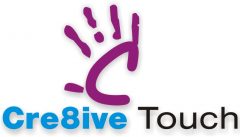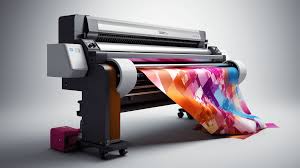What is Direct To Fabric Printing
Direct-to-Fabric (DTF) printing is a digital textile printing technique that involves printing designs directly onto fabric without using transfer paper or other intermediate materials. It’s a modern, efficient process widely used in the fashion, interior décor, and custom apparel industries.
How Direct To Fabric Printing Works
Direct-to-Fabric (DTF) printing is a process that involves printing designs directly onto fabric, as the name suggests. Here’s a step-by-step breakdown of how it works:
Digital Design Creation
It all starts with creating a digital design using graphic design software (like Adobe Illustrator or Photoshop). This design is then prepared for printing using a RIP (Raster Image Processor) software, which ensures the colors and print layout are ready for fabric.
Fabric Preparation
The fabric that will be printed on is treated with a special coating (pre-treatment) to help the ink adhere better and enhance color vibrancy. This step is crucial for achieving high-quality prints.
Printing Process
A specialized Direct-to-Fabric printer is used, which sprays water-based inks directly onto the fabric using inkjet technology. The printer moves the fabric under the print heads, applying the ink layer by layer.
- No Transfer Paper: Unlike heat transfer printing, the design is applied directly to the fabric—no intermediaries.
- Water-Based Inks: These eco-friendly inks soak into the fibers of the fabric, resulting in a soft, smooth finish.
Curing the Ink
After printing, the fabric goes through a curing process, typically using heat or steam. This ensures the ink bonds properly with the fabric fibers and makes the print more durable and resistant to washing or fading.
Post-Processing (Optional)
Sometimes, depending on the type of fabric or the desired effect, additional processes like washing, steaming, or stretching are performed to set the print and enhance the texture of the fabric.
Key Features:
- Versatility: Works well on a variety of fabrics like cotton, polyester, silk, and more.
- Vibrant Colors: Produces high-resolution, detailed images with vibrant, long-lasting colors.
- Eco-Friendly: Uses water-based inks, making it a more environmentally friendly printing method.
DTF printing is popular for fashion, home décor, custom apparel, and textiles because of its speed, flexibility, and ability to produce detailed and vibrant designs on fabrics.
Key Benefits of Direct-to-Fabric Printing:
- Vibrant and Detailed Prints: High-resolution prints with brilliant colors are achievable.
- Versatility: Suitable for various fabrics including cotton, polyester, silk, and more.
- Eco-Friendly: Uses water-based, environmentally friendly inks.
- No Transfer Paper Needed: Unlike other printing methods like screen printing or heat transfer, the design is printed directly onto the fabric.
- Quick Turnaround: Ideal for short runs or custom orders, as digital designs can be printed rapidly.
Direct-to-Fabric printing is used in fashion for creating custom garments, in interior design for printing on upholstery or curtains, and in personalized products like custom t-shirts, banners, and home décor items.




